The Middle East Cluster
This Proto-Indo-European term ghosti referred to a kind of unspoken etiquette, a notion that on seeing strangers on the horizon, rather than choose to fell them with spears or sling-shots, instead we should take the risk of welcoming them across our threshold – on the chance that they might bring new notions, new goods, fresh blood with them.
Over time this word-idea evolved into the Greek xenia – ritualised guest–host friendship, an understanding that stitched together the ancient Mediterranean and Near Eastern worlds.
- Bettany Hughes, Istanbul: A Tale of Three Cities -
The Middle East cluster, that - according to the Globe Project - includes Egypt, Kuwait, Morocco, Qatar, and Turkey - is home to:
- high-context cultures, that rely on contextual knowledge more than on explicit messages to transmit and share information;
- past- and present oriented polychronic cultures, that see time as a a repetition of natural cycles and patterns;
- high levels of in-group collectivism (also defined as “family collectivism”, “the extent to which individuals identify with and prioritize the group they belong to”);
- a being orientation (based on “moral relativism”, the idea that moral principles are culture-bound: being cultures tend to more more concerned with maintaining the collective harmony than they are with pursuing the “truth”);
- strong and well-defined power dynamics, even though societies that belong to this cluster express a desire for a more even distribution of power and resources;
- a clear dislike for ambiguity and unpredictability (Uncertainty Avoidance. This cluster has wish for more rules and regulations to reduce the possibility of uncertain future outcomes);
- low levels of Gender Egalitarianism (the belief that people should receive equal treatment regardless of their gender);
What’s peculiar about Middle Eastern societies (a trait they share with both Eastern European- and Latin American societies) is that they score high in terms of In-Group Collectivism (ING, applicable to small groups) and relatively low in terms on Institutional Collectivism (INC): while individuals tend to feel a strong sense of obligation toward their families and organizations (a clear distinction is made between in-groups and out-groups), they don't necessarily strive to ensure that resources and opportunities are accessible to all members of the society.
With regard to shame as an informal tool of social control (some context about the difference between shame and guilt from a cultural perspective is available here), while in both Confucian Asia and Southern Asia shame is mostly concerned with the loss of face, in the Middle East shame is usually tied to honour, a concept linked to social standing and to perceived "manliness". Individuals in a high social position are expected to "behave their status" (e.g., to dress smartly and to drive a nice car), to be the person others expect them to be, and to preserve family good reputation.
Even though in the Middle East cluster people tend to value leaders who are charismatic (inspirational/visionary/decisive), team-oriented, participative, it must be noted that these desired traits have the lowest scores for all other clusters.
Self-protective leadership (the self-conscious style that focuses on “face-saving”, on the safety and protection of the leader). on the other hand, has the second highest score of all clusters.
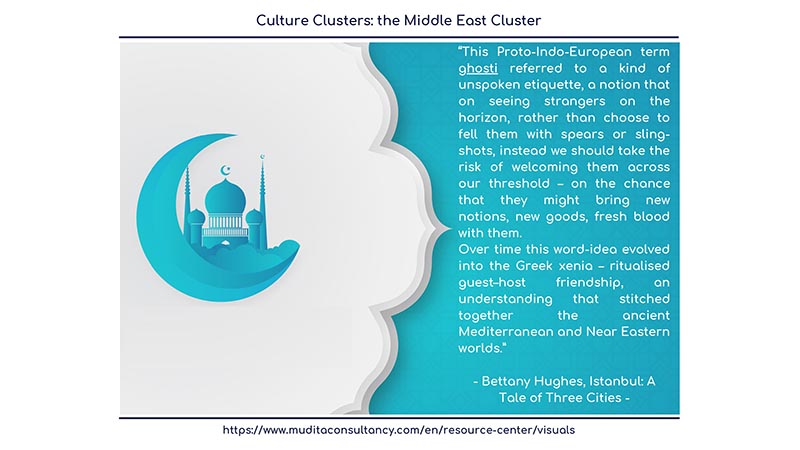
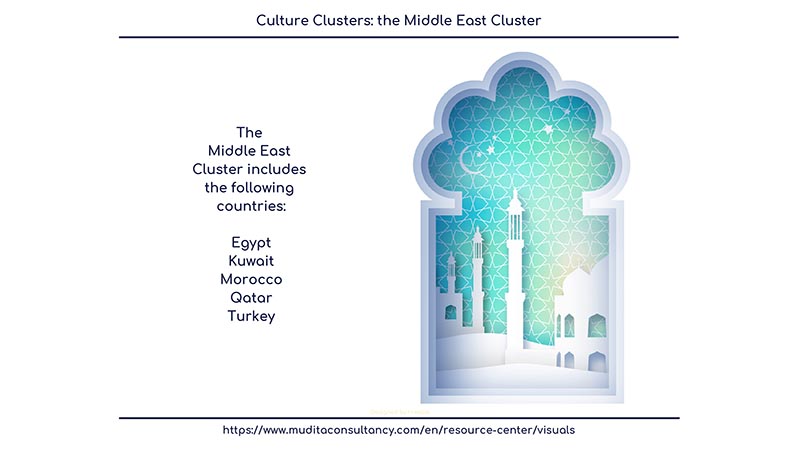
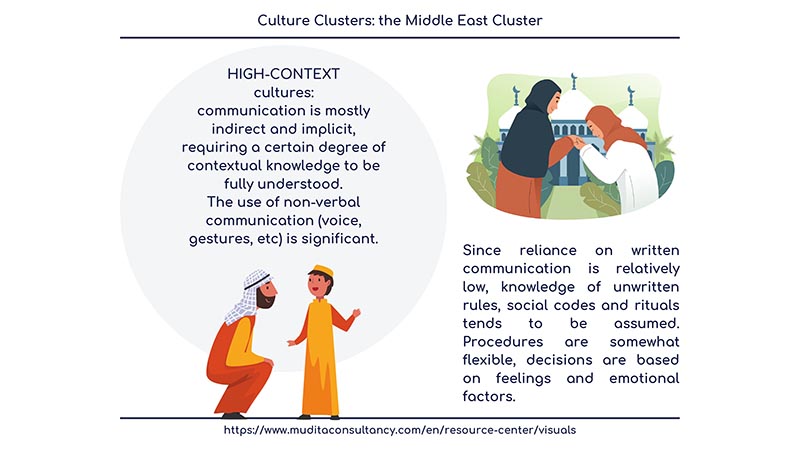
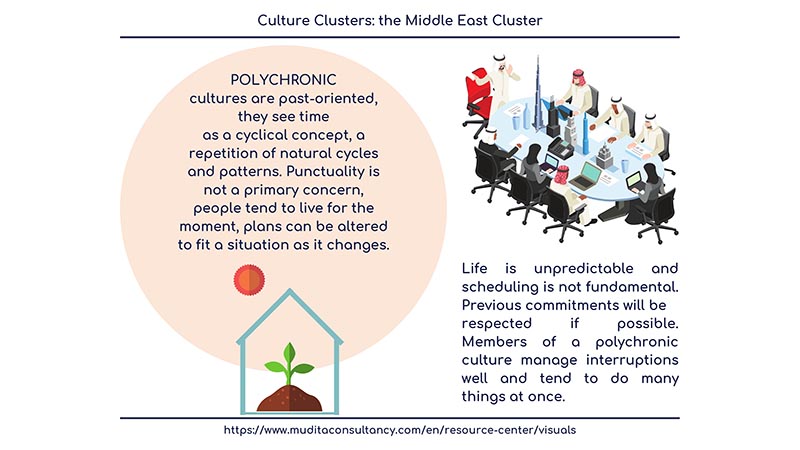
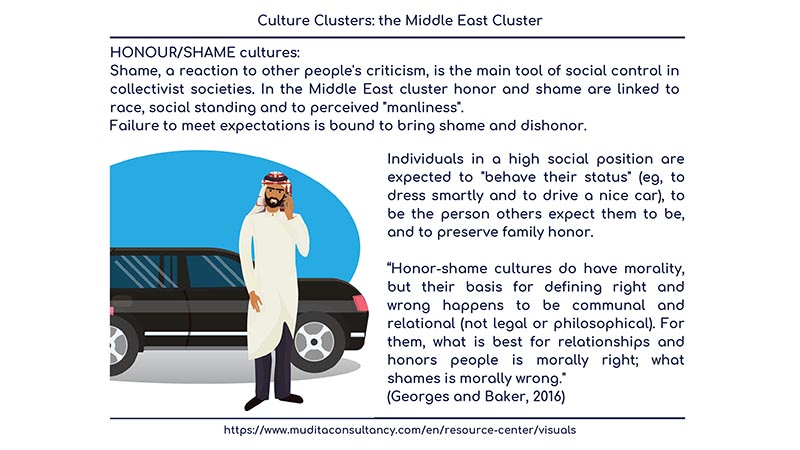

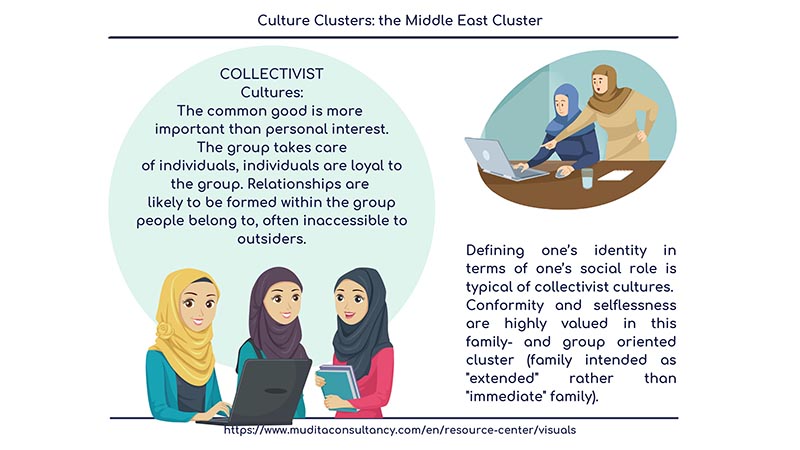
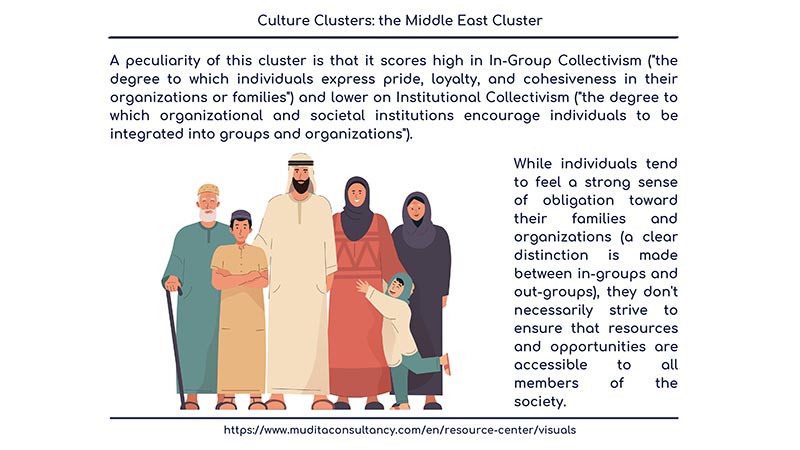
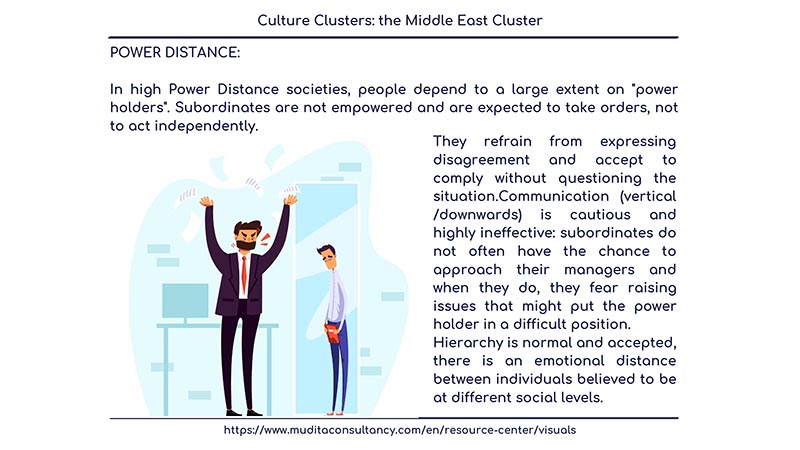
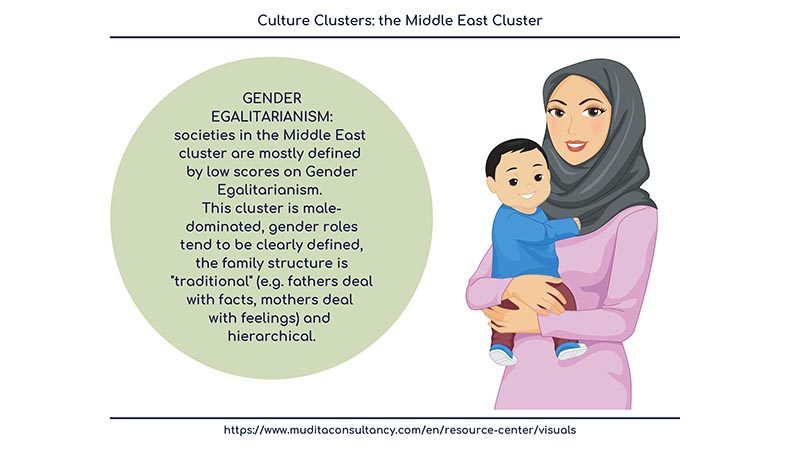
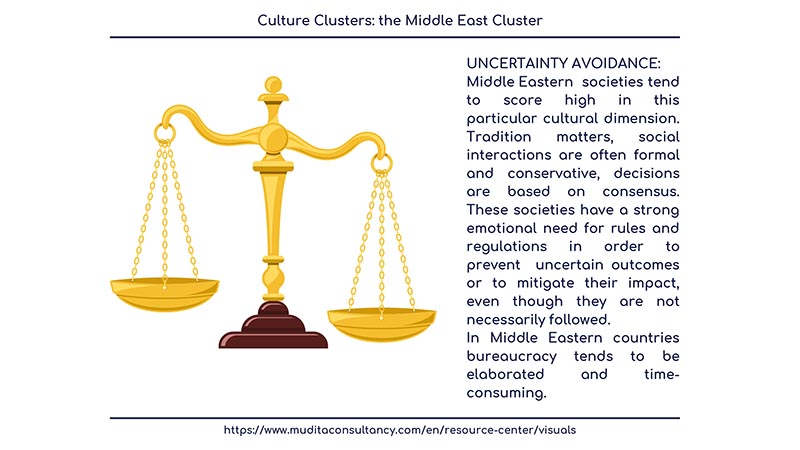
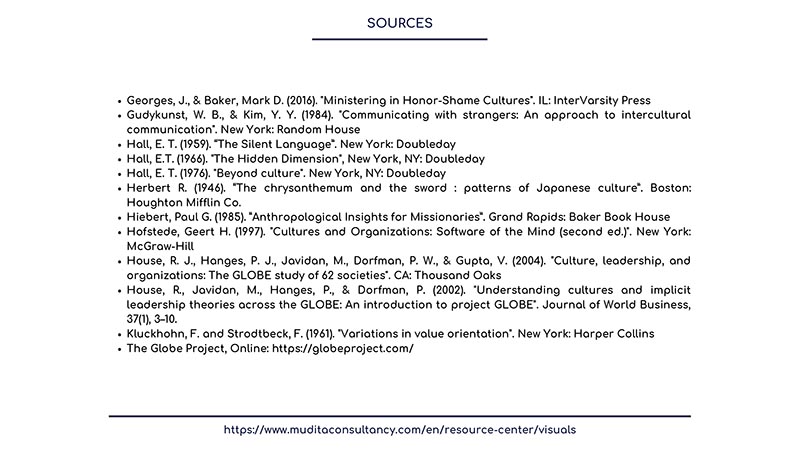
Related posts:
- The Sub-Saharan Africa Cluster
- The Germanic Europe Cluster
- The Latin Europe Cluster
- The Nordic Cluster
- The Eastern Europe Cluster
- The Southern Asia Cluster
- The Confucian-Asia Cluster
- The Anglo Cluster
- The Latin America Cluster
***
SOURCES:
- House, R. J., Hanges, P. J., Javidan, M., Dorfman, P. W., & Gupta, V. (2004). "Culture, leadership, and organizations: The GLOBE study of 62 societies". CA: Thousand Oaks
- Hall, E. T. (1959). “The Silent Language”. New York: Doubleday
- Hall, E.T. (1966). "The Hidden Dimension". New York: Doubleday
- Hall, E. T. (1976). "Beyond culture". New York, NY: Doubleday
- The Globe Project, Online: https://globeproject.com/
- Hofstede, Geert H. (1997). "Cultures and Organizations: Software of the Mind". New York: McGraw-Hill
- Herbert R. (1946). “The chrysanthemum and the sword: patterns of Japanese culture”. Boston : Houghton Mifflin Co.
- Kluckhohn, F. and Strodtbeck, F. (1961). "Variations in value orientation". New York: Harper Collins
- Gudykunst, W. B., & Kim, Y. Y. (1984). "Communicating with strangers: An approach to intercultural communication". New York: Random House
- Hiebert, Paul G. (1985). ”Anthropological Insights for Missionaries”. Grand Rapids: Baker Book House
Disclosure: This post contains affiliate links. If you decided to buy any of the products listed here, I would earn a small commission (at no additional cost to you).

